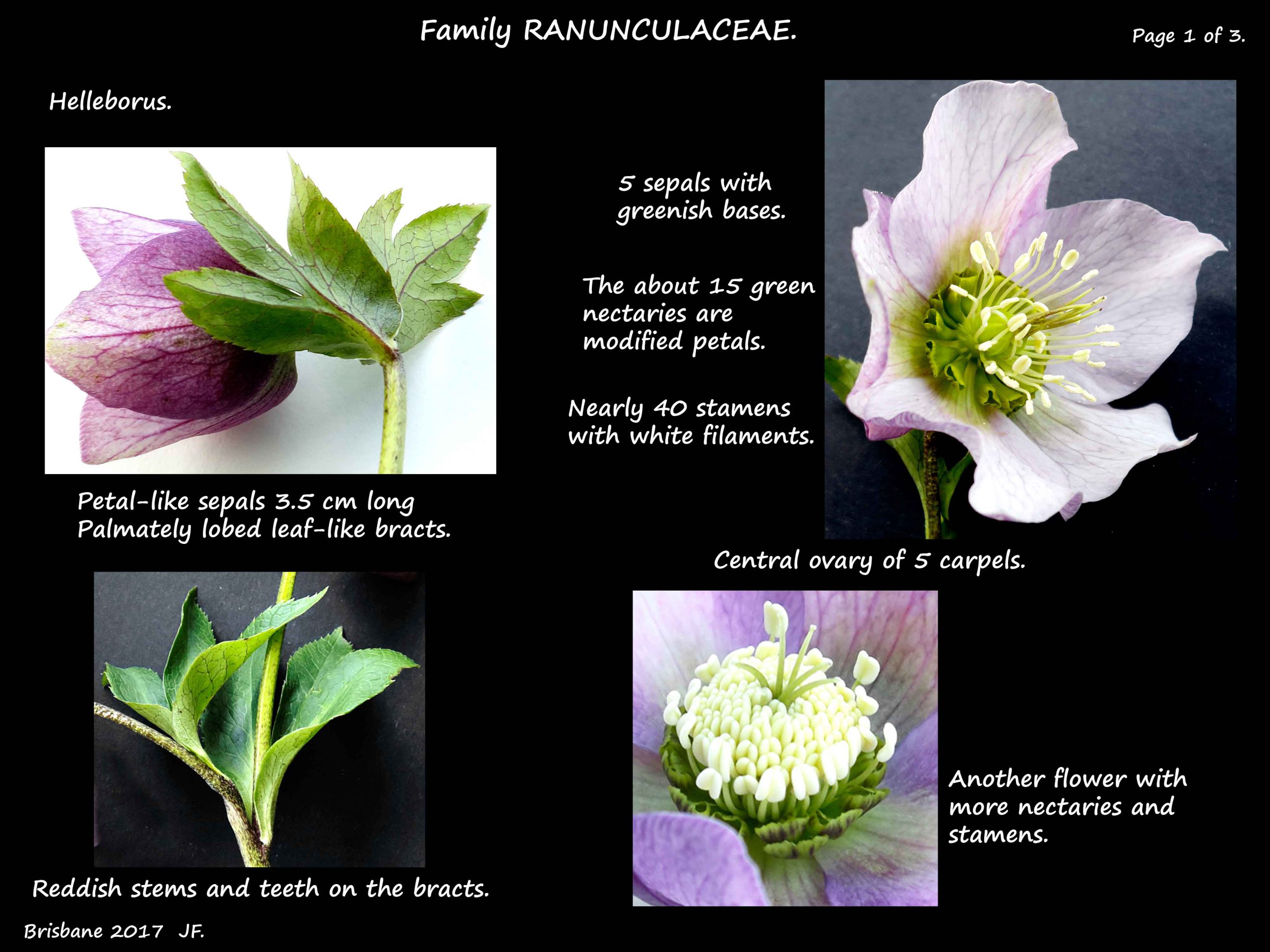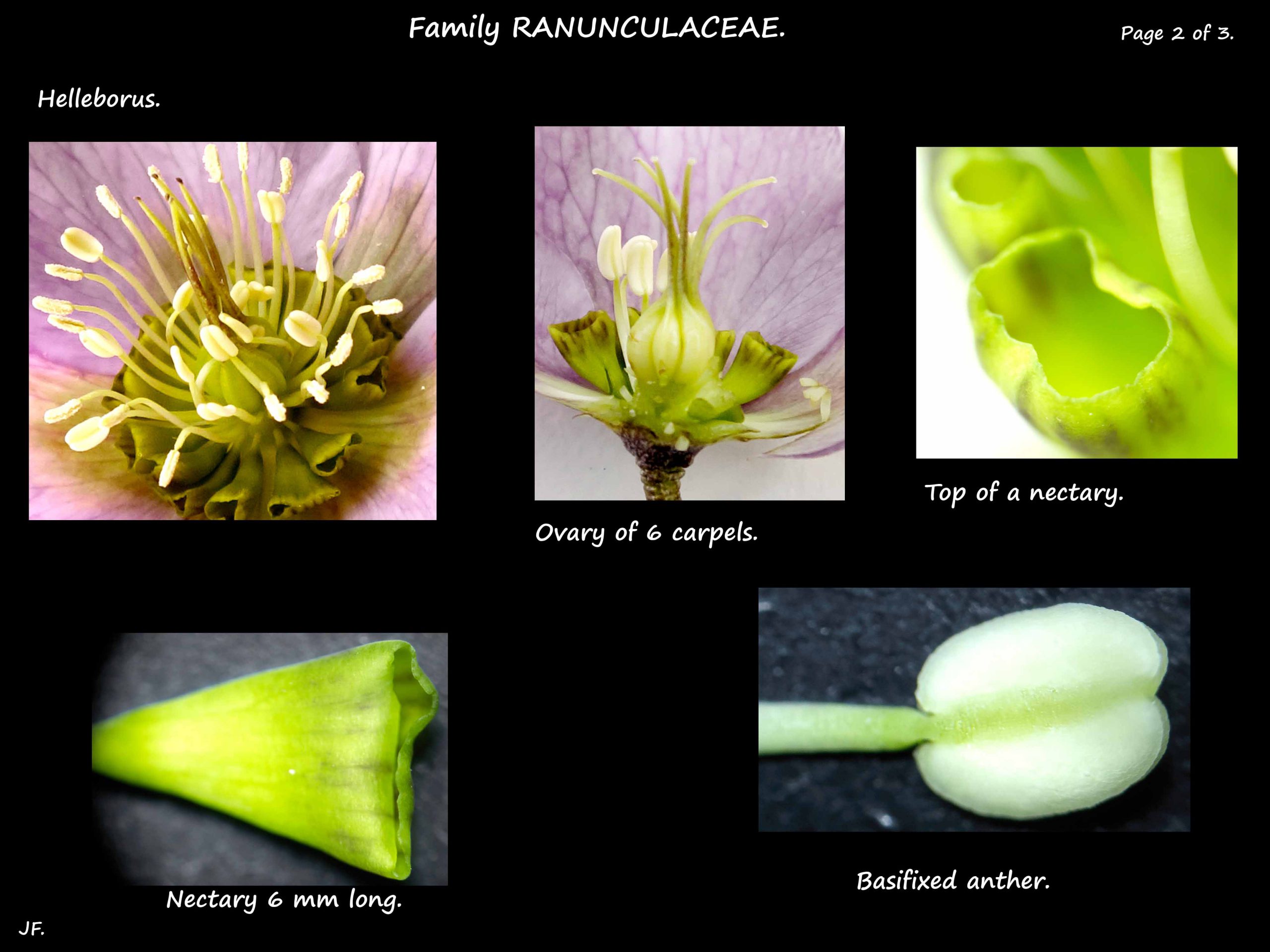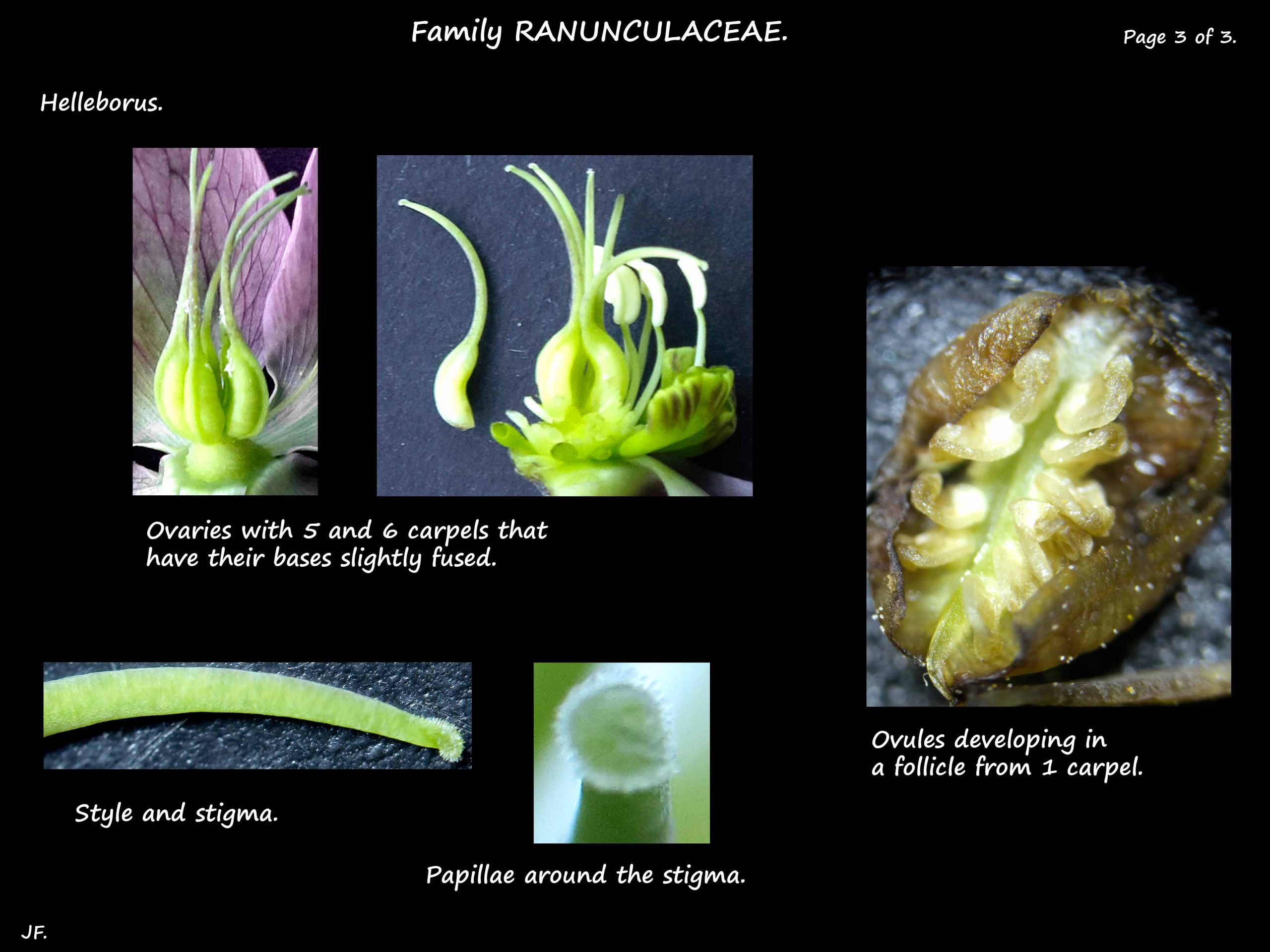Helleborus – Helebores.
Family Ranunculaceae > Subfamily Ranunculoideae > Tribe Helleboreae.
The 15 to 20 species of Helleborus are known as Hellobores.
Some species and hybrids are known as Lenten Rose or Winter Rose.
Seen as garden plants or cut flowers as the flowers last for a long time.
They are perennial, evergreen or deciduous plants growing from rhizomes.
There are 2 main types depending on whether the flowering stems have leaves or not.
The caulescent group is the smallest with only 4 species.
In these the leafy stem/s arising from the rhizome also carries the flowers.
Acaulescent species have separate basal leaves and flower stems arising from the rhizome.
There are leaf-like bract under the flowers but no true leaves on the stem.
Some hybrids and cultivars have both types.
Leaves are palmately divided into 3 leaflets all attached at the same spot.
All 3 leaflets may be deeply cut or further divided to various degrees.
Sometimes only the lower 2 leaflets are divided – pedate.
Leaves can have well over 100 leaflets (H. multifidus subsp. hercegovinus).
The more divided they are the narrower the terminal segments become.
Margins can be smooth but are commonly toothed.
Initially soft the leaves become leathery.
The branched, reddish inflorescence stalks may or may not have leaves on them.
The stems are from about 25 cm up to 1 m high.
There are small, leaf-like bracts at each branch and under the flowers.
The stalks have many tiny bumps on them.
The cup or bell-shaped flowers are often facing down.
The calyx consists of 5 petal-like sepals.
Including cultivars they can be reds, pink, yellow, white, nearly black, purples or greyish.
The inner surface can have various markings – lines, blotches or dots.
Differently coloured flowers may be seen in a single species.
Some cultivars have sepals with a darker edge.
The outer surface is often greenish and after fertilisation the whole sepal becomes greenish.
This is due to chlorophyll as the sepals can photosynthesise.
Sepals remain on the plant until the fruit are mature.
The petals are reduced to small, yellowish-green cup-like or tubular nectaries.
There can be 5 to 20 nectaries and the number can vary within a species.
They fall off after fertilisation as do the stamens.
There can be up to 150 stamens on long, white filaments.
The anthers are initially covered by greenish-yellow anther caps.
There are 3 to 10 carpels with reddish styles.
The bases of the carpels are slightly fused.
Each fertilised carpel develops into a follicle.
These split down one side, from top to bottom, releasing the usually dark seeds.
Cultivars and hybrids.
Flowers can be semi-doubles or doubles with the extra whorls forming from the nectaries.
The can look like normal petals or be smaller and ruffled or curled.
Some inner petals may be a different colour from the outer ones.
Leaves can be mottled or blue-green with silvery veins.
J.F.




